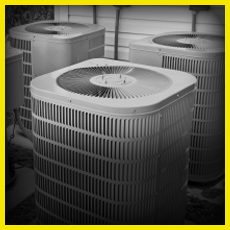OVERVIEW
Across the United States, space heating and cooling account for 43% of residential energy use,1 consuming 2.7 million GWh of energy.2 Although improving the building shell can have a dramatic impact on heating and cooling needs,3 the type of heating, ventilation, and air conditioning system (HVAC) is an important factor in home efficiency. With greater consumer education and accessibility to efficient equipment, energy used in residential climate control could be reduced by more than 250,000 GWh,4 the amount of energy used by homes in Arkansas, Kansas, and Kentucky combined.5
ANALYSIS
Buying a new heating or cooling system is a daunting task for consumers– it’s both expensive and confusing.6 Even with the EnergyGuide label,7 it’s not clear which system will work best in a particular situation, as performance varies from house to house.8 To ensure comfort, most HVAC systems are oversized wasting both energy and money.9 Even after installation, most consumers don’t know whether they made the most cost effective decision.10
Additional hurdles to obtaining efficient systems stem from manufacturer and distributor practice. HVAC systems must meet minimum efficiency standards set by DOE.11 Manufacturers can also choose to participate in the voluntary Energy Star program,12 but they have little incentive to reach beyond these targets.
Distributors stock only a subset of the available products, limited by the high cost of these items.13 Moreover, roughly a third of HVAC replacement decisions are made under duress, when the homeowner’s current system fails.14 This leaves many consumers without time to fully evaluate their options and identify the distributor with the more efficient product.
IMPLEMENTATION
To overcome information and distribution barriers, the federal government should implement a number of policies.






